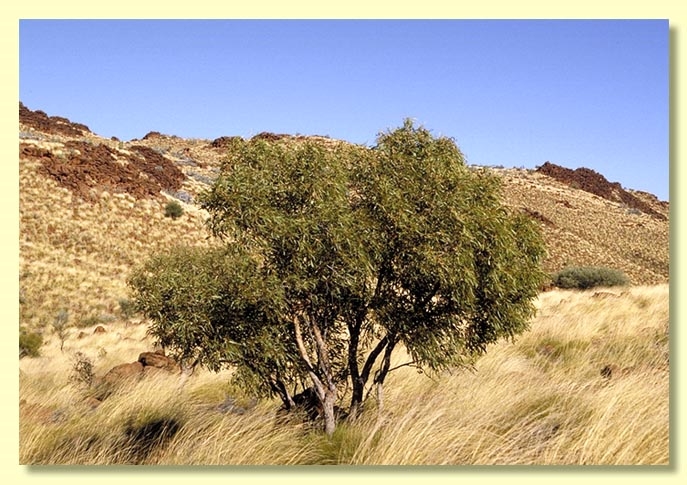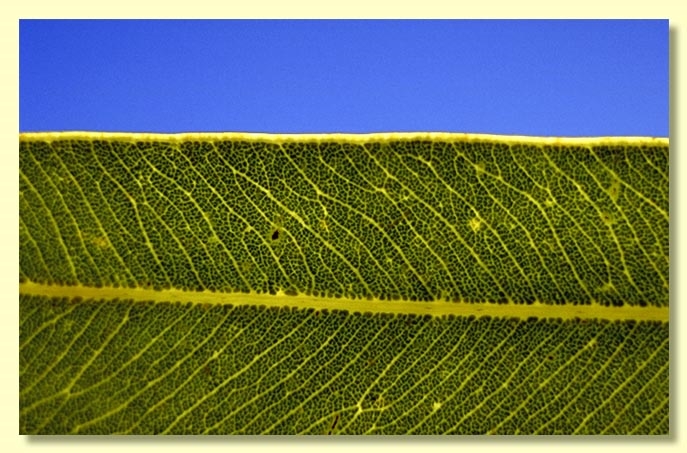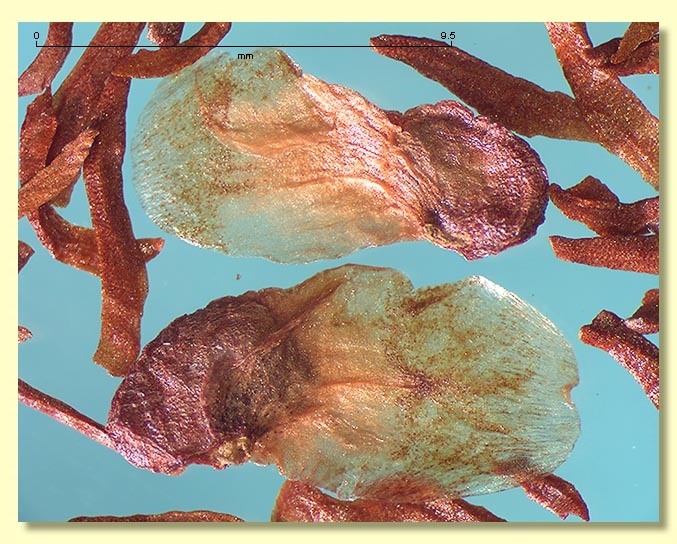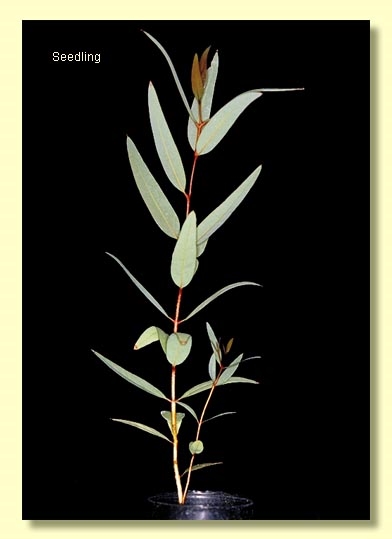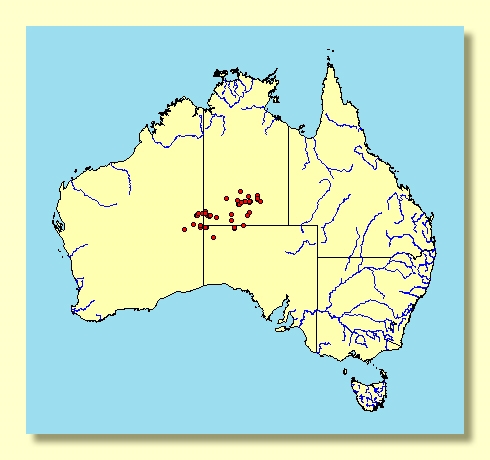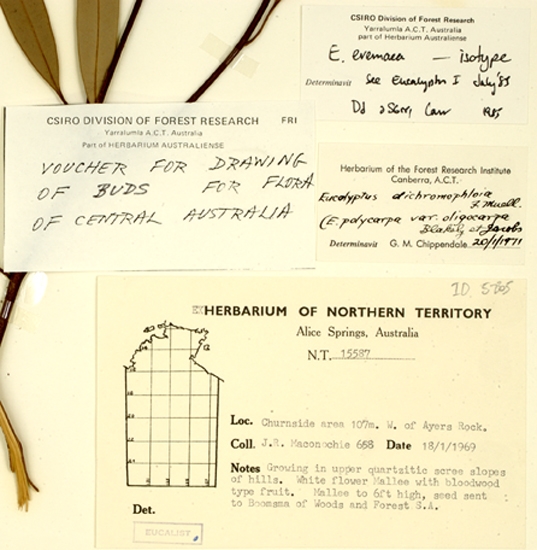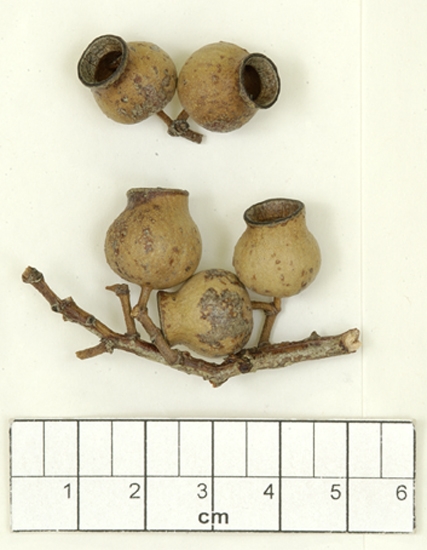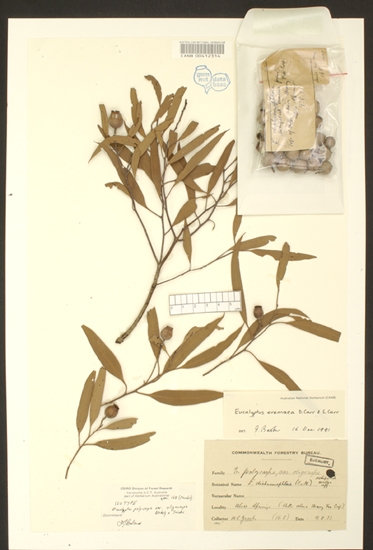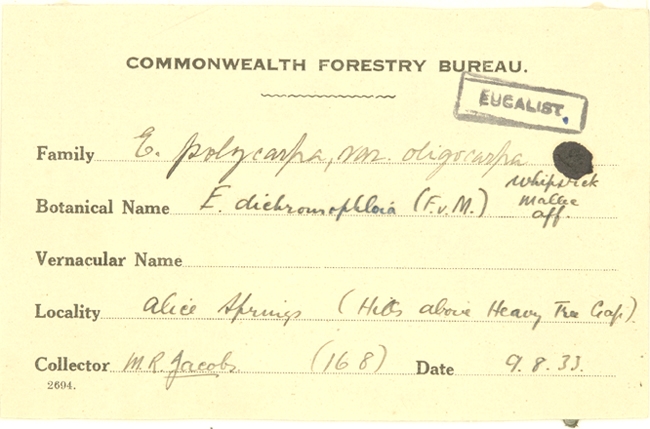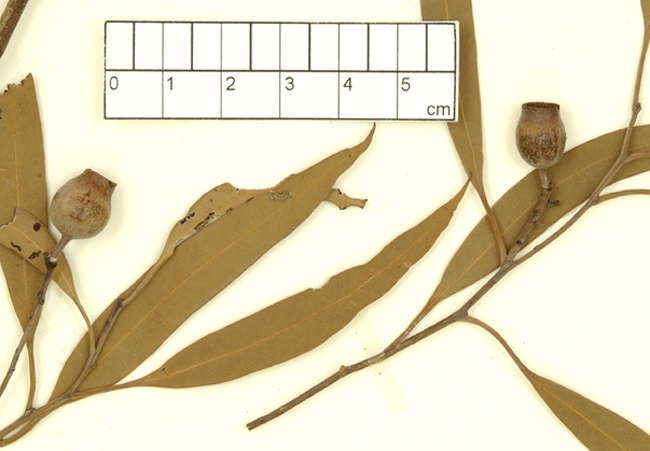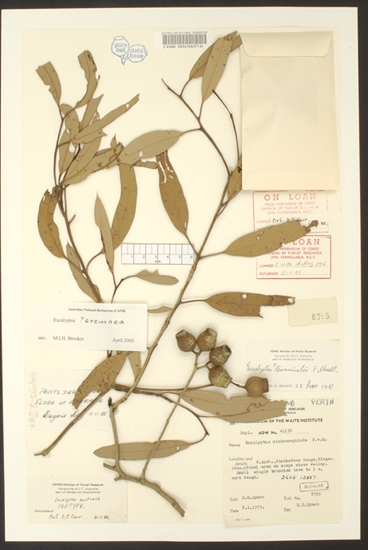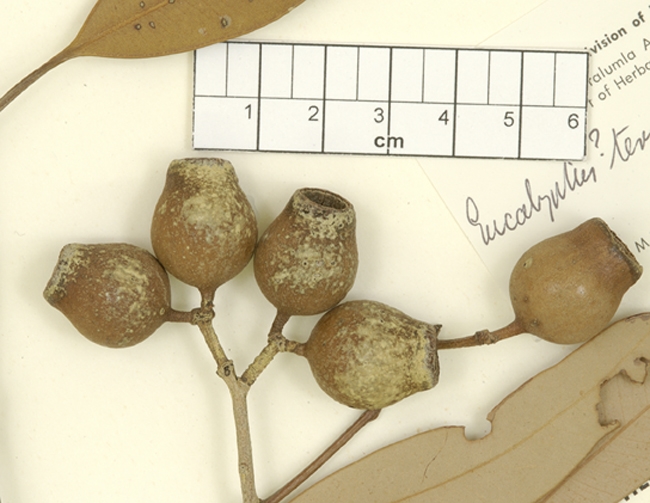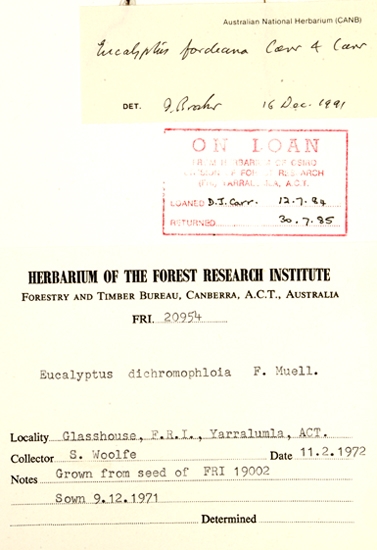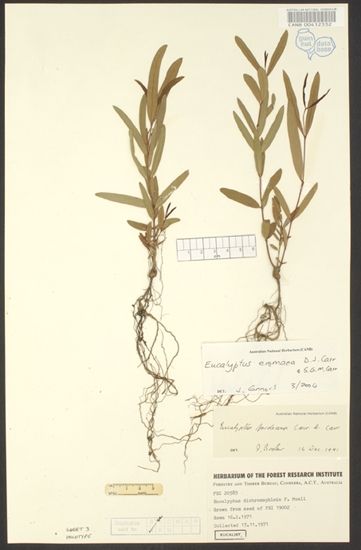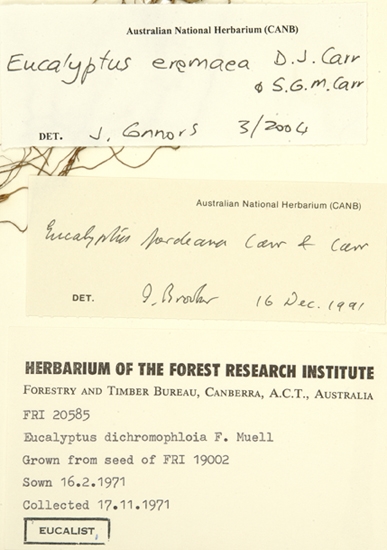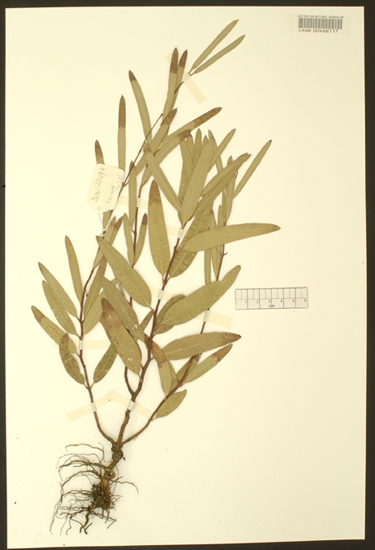Euclid - Online edition
Corymbia eremaea
Corymbia | Rufaria
Corymbia eremaea (D.J.Carr & S.G.M.Carr) K.D.Hill & L.A.S.Johnson, Telopea 6: 309 (1995).
Eucalyptus symonii D.J.Carr & S.G.M.Carr, Eucalyptus 1: 36 (1985). T: Northern Territory: Mulga Park Station, 30 July 1962, D.E.Symon 2158; holo: AD.
Bark rough and evenly tessellated, pale grey-brown to red-brown to orange-brown, in trees usually persisting on the small branches; however, when a dwarf mallee the bark may be entirely smooth.
Branchlets lacking oil glands in the pith.
Juvenile growth (coppice or field seedlings to 50 cm): stems round in cross-section, leaves opposite to sub-opposite, shortly petiolate, linear to narrowly lanceolate, dull grey-green to green.
Adult leaves alternate, petioles 0.6–2 cm long; blade narrowly lanceolate to lanceolate, (6)7.5–12(15)cm long, (0.8)1–2.1 cm wide, flat, concolorous, dull to slightly glossy, green, base tapering to the petiole, margin entire, apex acuminate to acute, side-veins penniveined, reticulation very dense, intramarginal vein absent, oil glands obscure or absent.
Inflorescence terminal compound, peduncles 0.8–1.4 cm long, buds 7 per umbel, pedicels 0.3–0.8 cm long. Mature buds obovoid to ovoid to rarely pyriform, 0.6–0.8 cm long, 0.4–0.5 cm wide, red, surface smooth and glossy, scar absent (both opercula shed together at flowering), operculum rounded to conical, stamens inflexed, anthers oblong, versatile, dorsifixed, dehiscing by longitudinal slits, style long and straight, stigma papillate (mop-like), locules commonly 4 (occasionally 3 or 5), ovules not in regular rows. Flowers white.
Fruit pedicellate (pedicels 0.2–0.7 cm long), usually urceolate with a well developed narrowed neck at the apex, 1.1–2.2 cm long, 0.9–1.8(2) cm wide, disc vertically descending, valves 3–4(5), deeply enclosed.
Seeds brown, ellipsoidal with terminal wing, 7–12 mm long (including wing), dorsal surface smooth.
Cultivated seedlings (measured at node 10): cotyledons reniform; stems round in cross-section, smooth to slightly scabrid, leaves subsessile to very shortly petiolate, opposite to subopposite, lower leaves ovate to shortly lanceolate and slightly scabrid becoming lanceolate and glabrous by node 6, 4.8–12 cm long, 0.9–2 cm wide, dull grey-green, base of lower leaves truncate to rounded but soon tapering to the petiole as leaves narrow, apex acute to apiculate.
Flowering has been recorded in January, April, November and December.
A small tree or mallee common on rocky ranges in far north-western South Australia and adjacent areas of Western Australia and The Northern Territory. As a tree Corymbia eremaea has rough tessellated and flaky bark throughout, or entirely smooth when a small mallee. The adult leaves are dull to slightly glossy, yellow-green to light green, buds are smooth and fruit small and urn-shaped.
C. eremaea is distinguished from another central Australian species, C. chippendalei, by its smaller urceolate fruit (globose in the latter species) and stony rather than sandy habitat; and from the widespread C. terminalis by the smaller, non-scurfy buds and preference for stony sites, particularly hills.
C. eremaea is most similar to C. lenziana which differs only slightly by having a drooping habit, fruit usually lacking a neck and having a preference for flat sandy areas.
C. eremaea subsp. oligocarpa is not regarded as significantly different from typical C. eremaea by the authors of EUCLID. The dimensions of adult leaves and fruits cited by Hill & Johnson (1995) show considerable overlap and in the field it is difficult to find consistent differences. Plants on ridgetops are usually much reduced in stature and may virtually lack rough bark but otherwise show no difference to taller, fully rough-barked plants on the lower slopes.
MORE ABOUT CORYMBIA
MORE ABOUT RED BLOODWOODS

